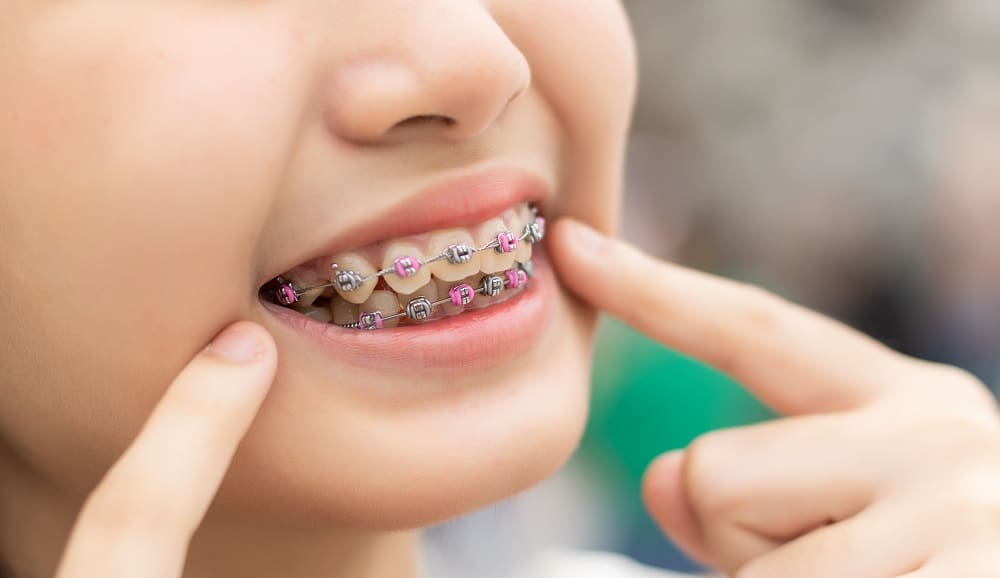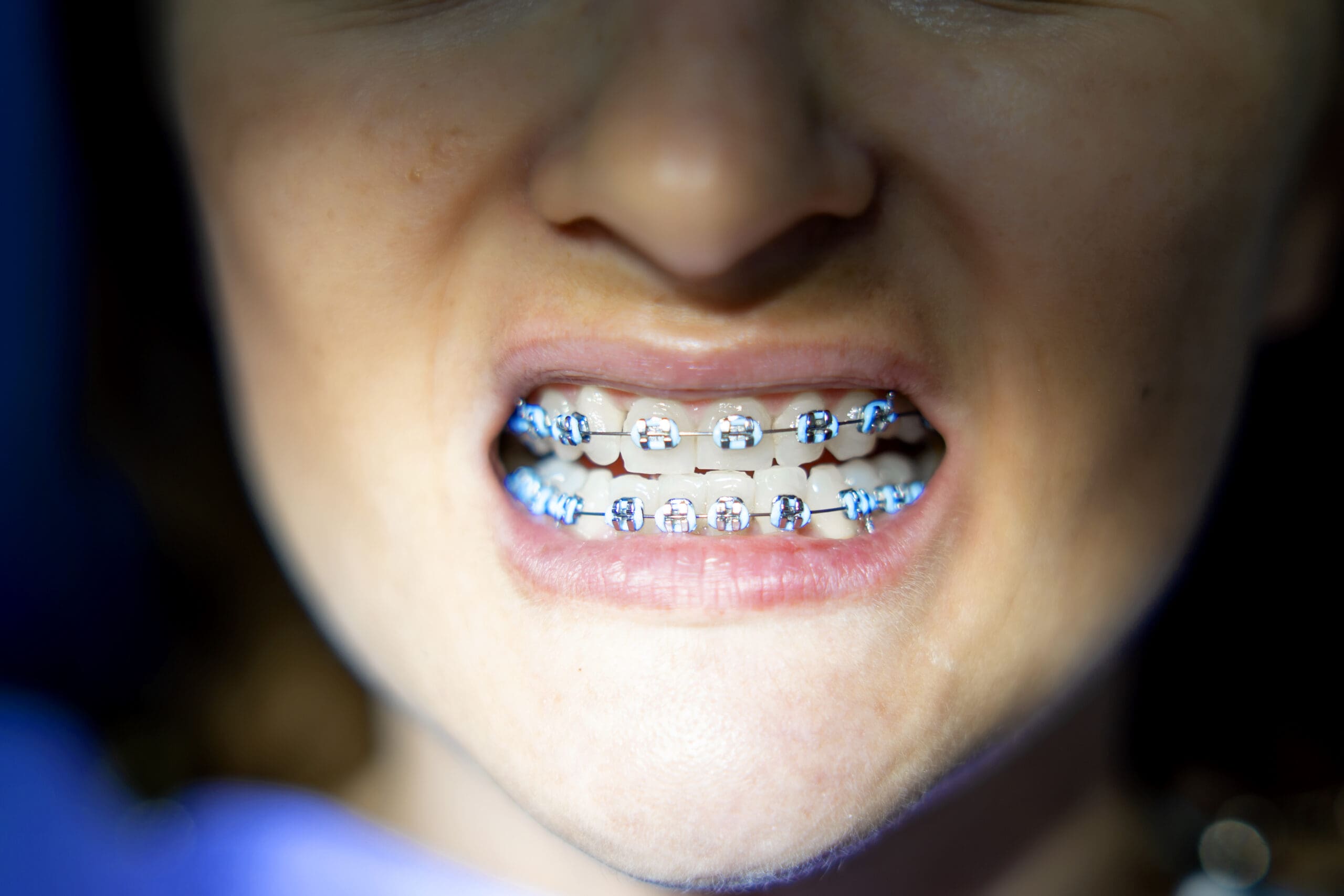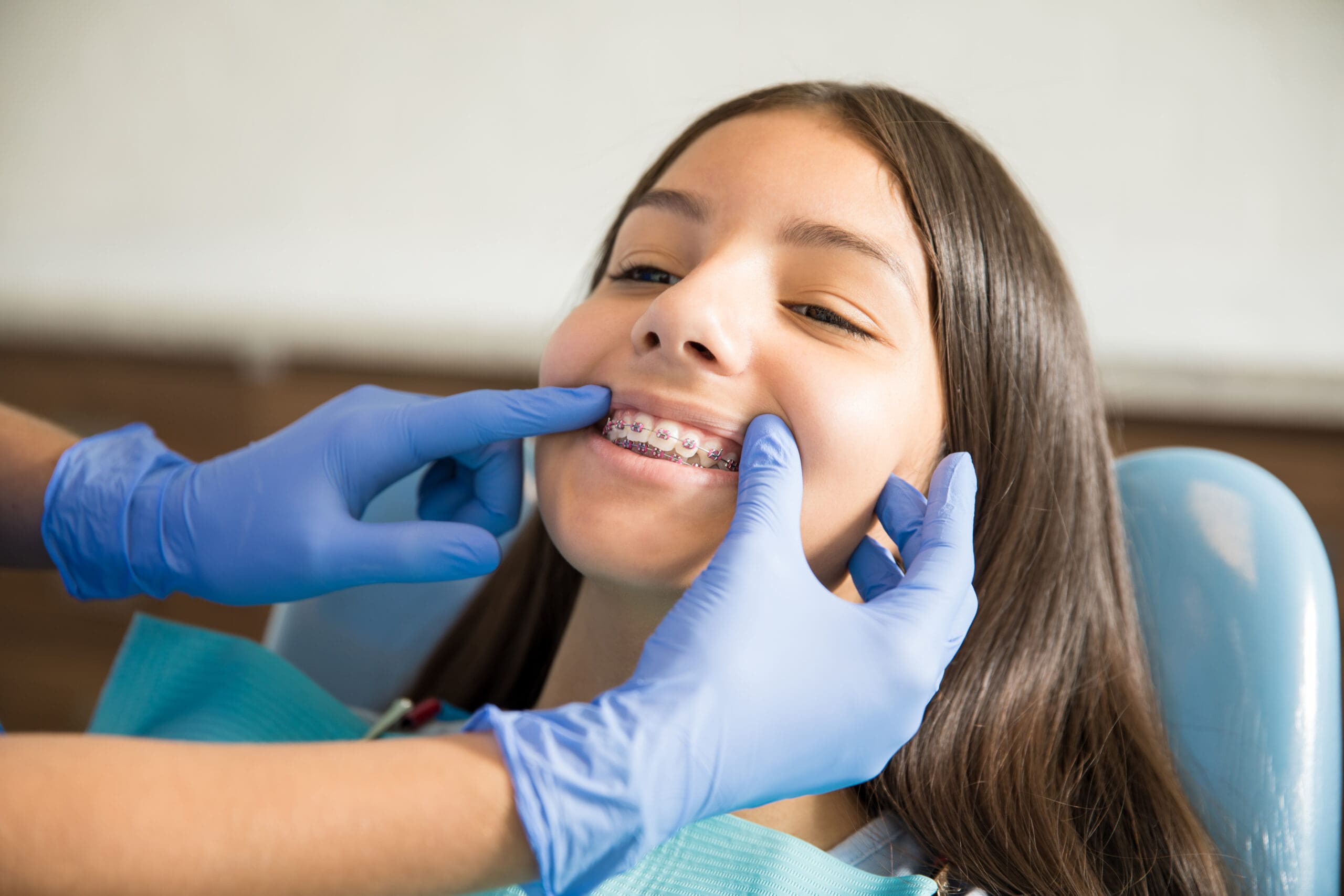Posted on September 18, 2025

Getting metal braces can feel like a big step for preteens and tweens, but it’s one that can lead to a healthier, straighter smile for life. At Smilebliss, we guide families through the entire process, starting from the first consultation to daily care instructions. With our support, you’ll feel confident and well-informed at every step.
Achieve your perfect smile with us! Contact us today to schedule your consultation and begin your journey toward a beautiful, healthy smile.
Metal braces have been a trusted solution for teeth alignment for years. Designed with metal brackets and wires, they effectively correct bite issues and misalignments, making them a popular choice for preteens and teens.
Metal braces consist of three primary components: brackets, archwires, and elastic ties. The brackets are small metal squares bonded to each tooth using dental adhesive.
The archwires are then threaded through the brackets, applying a constant, gentle pressure on the teeth. Elastic ties, available in various colors, secure the archwires and add a touch of personalization.
Metal braces apply continuous, gentle pressure to gradually move teeth into the desired position. During follow-up visits, the orthodontist adjusts the archwires to ensure steady progress.
Over time, this pressure aligns the teeth and corrects bite issues such as overbites, underbites, or misaligned jaws. Some discomfort after adjustments is normal, but it usually fades within a few days. Treatment time typically ranges from one to three years, depending on the severity of the case.
Metal braces are a popular choice because they are more affordable than alternatives like clear aligners. They are also stronger and more durable, making them ideal for children and teens.
Metal braces effectively correct severe overcrowding, misalignment, and bite issues, offering a reliable solution for complex orthodontic needs that newer treatments may not address as effectively.
Braces are needed when teeth are crooked or when bite issues occur, such as an overbite, underbite, or crossbite. Early orthodontic treatment can help avoid more complicated dental issues in the future.
 Signs that orthodontic treatment may be necessary include overcrowded teeth, gaps between teeth, or bite problems such as overbite, underbite, or crossbite. Children who have difficulty chewing, speaking, or breathing through their nose may also have alignment issues. Regular checkups with an orthodontist are essential for identifying these issues early.
Signs that orthodontic treatment may be necessary include overcrowded teeth, gaps between teeth, or bite problems such as overbite, underbite, or crossbite. Children who have difficulty chewing, speaking, or breathing through their nose may also have alignment issues. Regular checkups with an orthodontist are essential for identifying these issues early.
The ideal age for braces is typically between 10 and 14 years old, when the child’s teeth and jaw are still developing. Treatment is easier at this stage, as the bones are more flexible, which can help the treatment progress more quickly.
Some children may start treatment earlier (around age 7) if there are issues like thumb-sucking or early loss of baby teeth. Treatment may also be started later if needed, but early intervention often leads to better results.
At the first consultation, the orthodontist will take X-rays, impressions, and photographs to assess the alignment of the teeth. The orthodontist uses this information to design a customized treatment plan.
It’s also an opportunity for parents and children to ask questions and better understand the process. Some children may begin orthodontic care as early as age 7 if there are any early signs of misalignment.
Metal braces are a tried-and-true method for preteens and tweens to achieve a healthier smile. The process involves several key steps, from the initial consultation to regular follow-up visits for adjustments.
The first step of installation involves cleaning the teeth to ensure a strong bond. The orthodontist then bonds the brackets to each tooth using dental adhesive.
The archwires are threaded through the brackets and secured with elastic ties. This process may take about one to two hours. The archwires will gradually exert pressure on the teeth to align them.
After the initial installation, you’ll have regular visits every 4 to 6 weeks to adjust the archwires. These adjustments are necessary to maintain the right amount of pressure on the teeth and keep the treatment on track.
It’s common to experience some discomfort after an adjustment, but it generally fades within a few days. Consistent visits are essential for the successful outcome of the treatment.
 The typical length of treatment is between 18 and 24 months. However, this varies depending on the severity of the alignment issue, patient compliance with care instructions, and how quickly the teeth move. Following the orthodontist’s instructions and practicing good oral hygiene can contribute to shorter treatment time.
The typical length of treatment is between 18 and 24 months. However, this varies depending on the severity of the alignment issue, patient compliance with care instructions, and how quickly the teeth move. Following the orthodontist’s instructions and practicing good oral hygiene can contribute to shorter treatment time.
Getting braces involves preparing for dietary changes and committing to better oral hygiene habits. You’ll also need to purchase some orthodontic care products to help make the process easier and maintain a positive treatment experience for your child.
Once braces are in place, children must avoid hard or sticky foods like gum, popcorn, and chewy candies, which can damage the braces. Focus on softer foods like yogurt, mashed potatoes, soups, and steamed vegetables.
In the first few weeks, it’s best to stick to scrambled eggs, smoothies, and soft fruits. Hard foods, such as apples and sandwiches, should be cut into smaller pieces to make them easier to chew.
To properly care for braces, you’ll need a few essential items: orthodontic wax for soothing irritation, floss threaders for cleaning between the wires, and a soft-bristled toothbrush.
A travel toothbrush, fluoride toothpaste, and elastics should be included in your emergency kit. Using fluoride mouthwash will help prevent cavities and maintain enamel strength. A small mirror can help check for food stuck in the braces.
It’s natural for children to feel anxious or self-conscious about getting braces. Encourage them to express their feelings, which will help ease their concerns. Showing them pictures of celebrities with braces can help normalize the experience.
Reassuring them about the long-term benefits, like a beautiful smile, can improve their outlook. Celebrating milestones, such as the completion of the first month, helps keep them motivated throughout the process.
Metal braces are a reliable, effective solution for preteens and tweens to achieve a healthier, more confident smile. They address alignment issues, improve oral health, and boost self-esteem. While the process may seem overwhelming at first, the end result is well worth it.
At Smilebliss, we are committed to guiding you every step of the way. Schedule your consultation with us today to begin your journey toward the perfect smile!